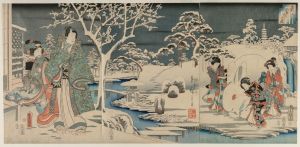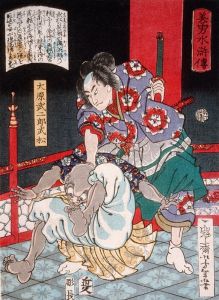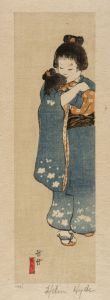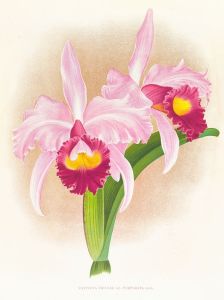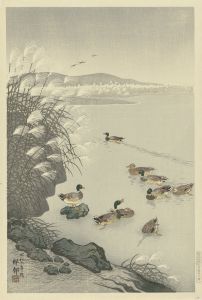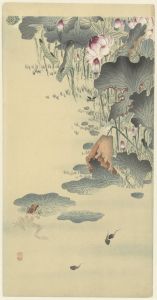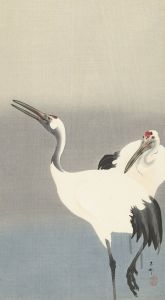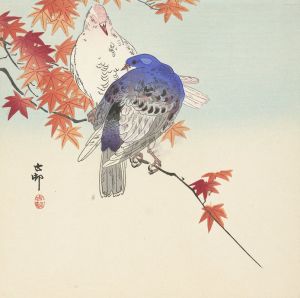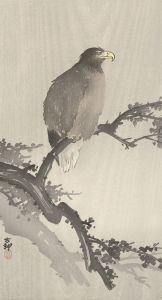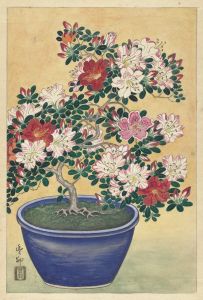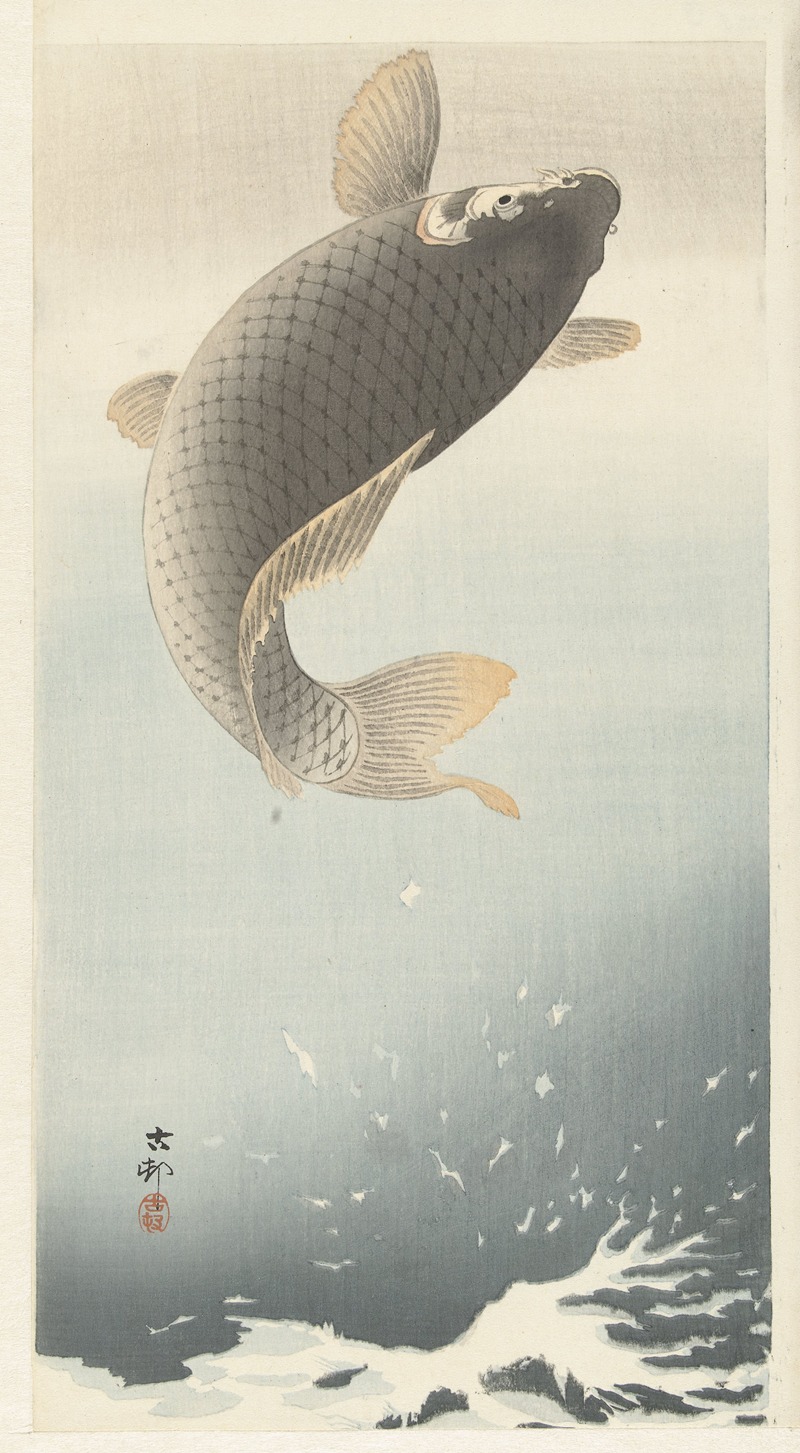
Carp
A hand-painted replica of Ohara Koson’s masterpiece Carp, meticulously crafted by professional artists to capture the true essence of the original. Each piece is created with museum-quality canvas and rare mineral pigments, carefully painted by experienced artists with delicate brushstrokes and rich, layered colors to perfectly recreate the texture of the original artwork. Unlike machine-printed reproductions, this hand-painted version brings the painting to life, infused with the artist’s emotions and skill in every stroke. Whether for personal collection or home decoration, it instantly elevates the artistic atmosphere of any space.
Ohara Koson (1877–1945) was a prominent Japanese artist known for his work in the shin-hanga ("new prints") movement, which revitalized traditional Japanese woodblock printing during the late 19th and early 20th centuries. Koson specialized in kachō-e, or "bird-and-flower" prints, a genre that often depicted animals, plants, and natural scenes with meticulous detail and aesthetic sensitivity. Among his many works, "Carp" is a notable example that reflects his mastery of composition, color, and the woodblock printing technique.
"Carp" by Ohara Koson portrays one or more carp swimming gracefully in water, a subject that holds significant cultural and symbolic meaning in Japan. Carp, or koi, are often associated with perseverance, strength, and success due to their ability to swim upstream against strong currents. This symbolism is rooted in Chinese and Japanese folklore, where carp are believed to transform into dragons if they successfully ascend waterfalls. Koson's depiction captures the elegance and fluidity of the fish, emphasizing their natural beauty and the serene environment they inhabit.
The artwork demonstrates Koson's skill in blending traditional Japanese aesthetics with the influence of Western artistic techniques, a hallmark of the shin-hanga movement. His use of subtle gradations of color and delicate lines creates a sense of depth and movement, while the composition often highlights the harmony between the subject and its surroundings. The attention to detail in the scales, fins, and rippling water exemplifies Koson's dedication to realism and his ability to evoke a tranquil mood.
Koson's prints were highly regarded both in Japan and internationally, particularly in the United States and Europe, where they were collected and admired for their craftsmanship and beauty. His works were often published by Watanabe Shozaburo, a key figure in the shin-hanga movement who played a significant role in promoting Japanese woodblock prints to a global audience. "Carp" is one of many prints that contributed to Koson's reputation as a master of kachō-e and a leading artist of his time.
While specific details about the creation date or the exact context of "Carp" may not be readily available, the piece remains an enduring example of Koson's artistic legacy. It continues to be appreciated for its technical excellence and its ability to capture the essence of nature in a way that resonates with viewers across cultures and generations.





